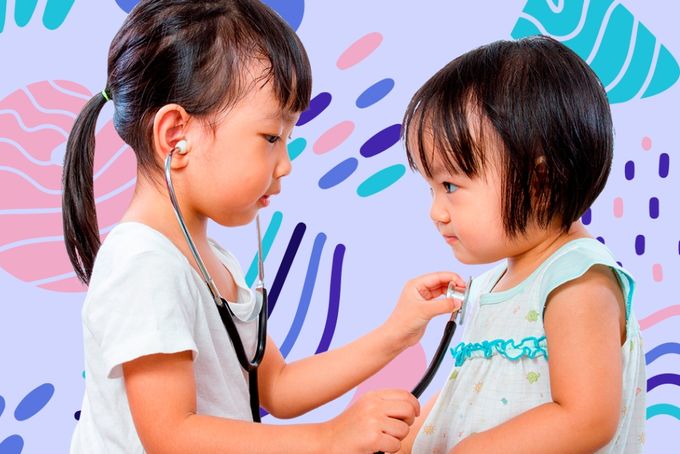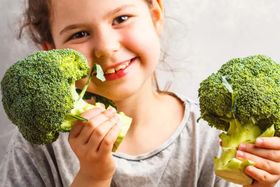The Unique Benefits of ELSE for Children with Eating Disorders
Updated October 11, 2024

Children with eating disorders are some of the most challenging conditions for parents and medical professionals to manage. It is not only an issue of what and how much is eaten, but the detrimental effects disordered eating has on the overall health of a young person or child. Eating disorders have both physiological and psychological components. They are currently classified into four categories: anorexia nervosa, bulimia, binge eating disorder, and avoidant-restrictive food disorder (source). Each has distinct symptoms and challenges.
Anorexia
- Reduction of food intake leading to an extremely low body weight
- Distorted body image
- Fear of weight gain
Bulimia
- Eating an excessive amount of food followed by a compensatory behavior
- Often weight is normal
- Fear of weight gain
Binge Eating Disorder
- Recurrent excessive eating episodes
- Often overweight
Avoidant-Restrictive Food Disorder (ARFID)
- Poor or restrictive eating due to fear of certain foods or choking on food
- Unassociated with body image issues
- Typically underweight
The numbers of children and adolescents who experience these disordered eating behaviors increases yearly, both in the United States and abroad. The CoVID-19 pandemic has contributed to this increase in children with eating disorders due to concerns about “lockdown” weight gain, and limited physical activity (source). Reduced access to nutritionists and mental health professionals along with postponed well visits have all played a role. Approximately 0.5% of adolescent girls in the U.S. are diagnosed with anorexia nervosa, and, more than double, with bulimia (source). In contrast, the incidence of this disorder is very low on the continents of Africa and Latin America, but higher in some Asian countries (source). There are differences in eating disorder trends based on age and gender. For example, binge eating disorder is more common in boys, but cases of anorexia are steadily increasing (source). Most eating disorders develop before adulthood, and the avoidant-restrictive type is typically seen in the younger children (source).
Clinical Scenarios
Before confirming the diagnosis of a patient, medical causes of weight change and malnutrition must be ruled out. Chronic illnesses and endocrine disorders such as type I diabetes and hyperthyroidism can mimic the weight fluctuations of a child's eating disorder.
In clinical practice, I have encountered a variety of disordered eating scenarios. In all cases of children with eating disorders, there have been some psychological factors and mental health issues that promote unhealthy eating behaviors. One example of ARFID is a 12 year old girl with a peanut allergy who experienced several episodes of anaphylaxis. Traumatized by this, she began to refuse to eat in restaurants for fear that peanuts would be inadvertently added to her food, causing yet another allergic reaction. Over time, she began to monitor food preparation at home “to be sure” no peanuts were added. If she suspected the possible addition of nuts, she would refuse to eat. Over time, this resulted in progressive weight loss and malnutrition.
In another case, a nine year girl diagnosed with anorexia suddenly refused to eat any family meals, consuming only crackers and water. This continued this habit over the course of a year, resulting in progressive weight loss and nutritional deficiencies. After therapy, nutrition counseling, and frequent office weight checks, she gradually improved. It was later determined that troublesome issues within her home had triggered her desire to “control” her eating.
In contrast, I see a range of anorexia, bulimia, and binge eating disorders among adolescent patients. For example, a 16 year old girl who suffered from severe body dysphoria always wore baggy clothing to “hide” her body. Despite several rounds of both inpatient and outpatient treatment and hospital admission, she insisted on consuming only coffee or water with the occasional cracker. When alone, she would repeatedly weigh herself and exercise. Her symptoms improved after intensive therapy, nutrition intervention, and an improved living situation.
Nutritional Challenges with Eating Disorders
Most eating disorders are characterized by a lack of macronutrients (carbohydrates, proteins and fats) and micronutrients (vitamins, minerals). Even when food is eaten, longterm restriction of food alters the absorptive ability of the intestines, exacerbating these nutrient deficiencies (source). Low levels of the B vitamin, thiamine, have also been shown to suppress the appetite.
Restrictive eating disorders impair normal growth and development. Muscle wasting is common due to insufficient protein intake. Reduced calcium and vitamin D cause low bone mineral density that can stunt growth (source). Suppressed estrogen or testosterone worsen these effects. In younger children, this growth stunting can become permanent. Selenium and Vitamin A deficiencies can exacerbate the neuropsychiatric aspects, and impair cognitive functioning (source). Electrolyte imbalances are common in severe eating disorder cases. Those who use laxatives lose chloride and bicarbonate. Particularly in cases of anorexia nervosa, the reduced intake of magnesium and potassium can lead to life threatening heart arrhythmias (source).
In situations of binge eating disorder, the foods chosen are often those of poor nutritional value. They are high fat, high sugar “comfort foods.” While muscle wasting and growth stunting are not seen in these cases, vitamin deficiencies may still be present along with high cholesterol and insulin resistance (source).
Treatment and a Role for ELSE
The treatment of eating disorders requires a multidisciplinary approach. Psychotherapy is the mainstay of treatment, used to modify unhealthy ideas about body image and food. Regular weight, height, and blood pressure checks are important to chart progress. If weight loss is severe, an EKG may be necessary to assess for cardiac arrhythmias from electrolyte imbalances. Nutrition counseling is important both for setting caloric intake goals, and to insure the replacement of lost nutrients. In some situations, medication is necessary to manage comorbid conditions such as depression and anxiety (source). Those with severe anorexia and avoidant-restrictive food disorder may require tube feedings during the early stages of treatment.
Changing the eating behaviors of these children and adolescents is an arduous process. The AAP has updated its guidelines on the management of eating disorders, and recommends promoting a “food as medicine for recovery” approach. They encourage supplementation of the commonly deficient vitamins (source). Nutritional beverages may be a helpful component of the overall dietary plan to expedite improvements in weight and growth.
ELSE is a plant-based, non-GMO nutritional beverage for children that could be particularly helpful for those with eating disorders. It can provide additional vitamins, proteins, healthy fats, and calories. ELSE is available in two flavors, chocolate and vanilla, and has 220 calories per serving. Of particular importance, ELSE is higher in protein than other nutritional drinks on the market. This protein is uniquely sourced from almonds and buckwheat. ELSE is fortified with a more complete variety of vitamins and minerals, and has less sugar than many of its competitors. Because of the dire need for nutrient replenishment, a supplement such as ELSE could play an integral part in restoring health in children and adolescents diagnosed with an eating disorder.
The content and advice provided in this article is for informational purposes only and is not a substitute for medical diagnosis, treatment, advice for specific medical conditions. Always consult a pediatrician to understand the individual needs of your child.













